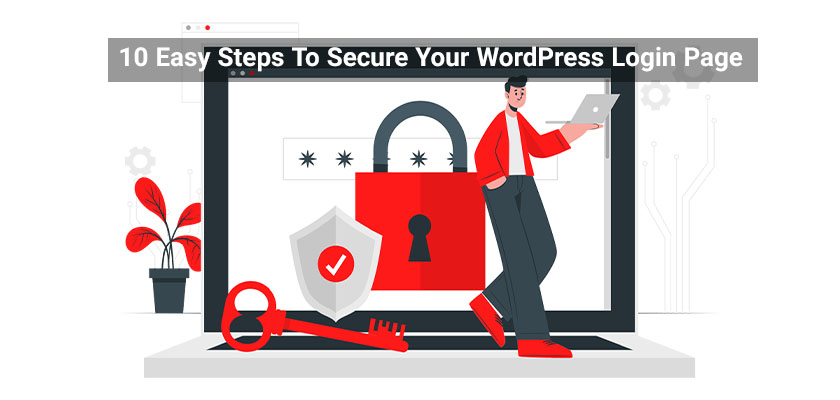
If a malicious third party manages to gain unauthorized access to your administrator dashboard, the consequences can be disastrous. There are, fortunately, a variety of methods to protect this space from cyber criminals and reduce threats against it.
In this article, we’ll discuss how to secure your WordPress website, specifically change WordPress login URL to safeguard your website also buying a secure WordPress web Hosting service is one of the most important tips which you need to pay attention in order to increase your WordPress website security. By following our tips to protect your WordPress admin dashboard, you will make it harder for hackers to gain access to your account, even if they know your password and username. Let’s get started!
Is Your WordPress Login Page Safe?
WordPress’s Login Page is secured, but it’s not completely secure. This is why it requires extra security to ensure it’s not at risk. It is possible to take steps to ensure that hackers can’t easily gain access to your website. Like using a secure WordPress hosting or editing the WordPress login page.
There are some aspects of the login pages that are predictable and, thus, vulnerable to attack. The URL of the login page, for example, is universal unless modified. Therefore, hackers know exactly the location to click. Furthermore, WordPress allows unlimited login attempts per day, which is an excellent chance to exploit bots.
This doesn’t mean it means that the WordPress login page isn’t secured. It just means that it requires extra security for logins to ensure that it’s not at risk. It is possible to take steps to protect the security of your WordPress login page and ensure that hackers are unable to access your website.
Why it’s Essential to Safeguard the Admin Dashboard
If a third party who is malicious succeeds in hacking the security of your WordPress account, they’ll be able to access all your personal information. This includes the personal details of anyone who has ever registered on your website. If you take payments, this could contain financial information, such as credit card information.
This type of data breach can cause irreparable damage to your reputation. Based on the laws in your area, this could put you in legal trouble since your website is under an obligation to safeguard the privacy of customer data.
If you do manage to keep your customers and endure legal consequences, the cost of recovering from an attack from cyberspace is huge. It’s best to avoid having to make that journey.
There are numerous attacks that specifically target WordPress login page. WordPress administrator dashboard of the site, such as assaults using brute force. They involve hackers bombarding the login area with typical username and password combinations with the intention of finding a suitable match.
WordPress is particularly susceptible to brute force attacks because, by default, each admin username and login URL for WordPress is identical for each installation. If you’re using defaults, the attacker just needs to figure out your password.
If you make a few adjustments by making changes to your WordPress login page, you will be able to safeguard your account from many different attacks.
Top 10 WordPress Security Measures to Safeguard the Login Page
So, how can you protect the wp-login.php URL? How to secure your WordPress website? Simply ensuring you protect the WordPress login page as well as the process could make a huge difference in terms of security. There are many ways hackers use to exploit weaknesses in your WordPress account login; we’ve made a short checklist of security measures that will ensure that you are covered.
1. Make Use of a Security Plugin
A security plug-in is typically thought of as an instrument to check your website for malware. But a good security tool is one that can ward against any attack and be capable of scanning your site. Security software that is complete, like MalCare, provides protection against firewalls, which will stop any attacks using brute force before they have the chance to break into your site in any way.
MalCare’s sophisticated firewall blocks attempt to log in and include ReCaptcha to your website (in the next article, we’ll discuss how to setup captcha for WordPress login and registration), blocks suspicious IPs and lets you completely stop requests from specific areas. MalCare makes the process so simple that you do not need to be concerned about security for your website after you’ve installed it.
MalCare allows you to detect and clean up malware. Furthermore, MalCare also offers vulnerability detection, activity logs and scans that won’t disrupt your website’s performance. It ensures the website’s security constantly and informs you of any suspicious activity as soon as it becomes apparent to ensure that no malware is able to be missed out on your radar.
2. Ensure Strong Passwords
It’s not a surprise that using passwords that are secure is a piece of advice that we should not hand out in sufficient amounts. Reusing weak passwords are among the top sources of hacks that occur online. As passwords are the most fundamental security tool available to you, it is essential that you use every method that you can to make them stronger. Here are a few ways to do this:
- Make sure you mix capital and small-case numbers, letters and special characters to increase the strength of your password.
- Utilize long passwords. Research shows that longer passwords are tougher to hack.
- Use a password manager to create and manage your passwords.
- Make sure that all users have strong passwords.
- Avoid using the dictionary word in passwords.
- Don’t reuse passwords.
- Change your passwords regularly.
3. Use Two-factor Authentication
The two-factor security is a method that requires 2 keys in order for anyone to access your website. One of the keys is the password, and the second key is generated in real-time and sent to you via email or a message. Two-factor authentication protects your website against brute force attacks because bots cannot provide the second key and are therefore locked out of your site even if they are able to guess your password.
It is possible to download a plugin like WP 2FA, which allows two-factor authentication for your website and helps protect it from attack.
4. Review User Accounts Regularly.
Users’ accounts on your WordPress website could pose an enormous security risk in the event that they are not monitored regularly and efficiently. If you have many clients on your WordPress website, any of them could be a weak link that allows the malware to get into. Here are some methods to manage your users that you can apply:
- Clean out old and inactive accounts regularly.
- Make sure to check user privileges regularly and ensure that there aren’t abrupt privilege increases.
- Keep a record of the accounts of users. Remove any accounts you suspect are not yours to create.
- Make sure to update all credentials on a regular basis.
- Utilize an activity log to keep track of user activities. Infrequent activity is usually the first indicator of a compromised user account.
5. Cap Login Attempts
As we’ve discussed, hackers may use bots to carry out brutal attacks on your site in an attempt to get access. Even if bots cannot hack your passwords, the massive increase in login requests could overburden your server and result in your website being unable to function.
The easiest way to stop this is to limit the number of login attempts to your site’s server. If you are using MalCare, it automatically blocks the number of login attempts and also blocks suspicious IPs without needing to configure it. You can, however, use another security plugin to do this or restrict login attempts by hand. You can also change WordPress login page without a plugin to restrict hackers and users from brute-forcing their way into your website.
6. Make Use of SSL
SSL is an encryption protocol for security that secures all communications between and to a web server. That means that if someone takes over any data being transmitted to you or is sent through you, they are unable to understand the data since it is encrypted. If you see an icon of a lock on the URL of a website indicates that it’s SSL secured.
SSL is a generally excellent security technique to implement to help ensure your digital communications are secure and is recommended by a majority of websites, such as search engines, and firewalls. This is so much that Google has begun to remove sites that are not SSL secured. Which is why many best WordPress hosting providers offer free SSL with their plans in order to offer a secure WordPress hosting experience to their customers.
7. Auto Logouts Can be Enabled
Based on the settings you’ve made, WordPress automatically logs you out of the system after 48 hours or 14 days. If you leave the browser unattended for a while in one of the left-over tabs in your browser, this could give hackers a way that they can use to access your account. Cookie hijacking is a typical method used by hackers to gain control of user sessions by being able to access the cookies stored by your browser.
To avoid this, you should enable auto-logouts with an application that ensures that the user is automatically removed from the system after a predetermined period of time.
8. Limit the Privileges of Users
Another security risk with regard to account users is the privileges. In many cases, users are granted excessive privileges, which could turn out to be a huge flaw in the security of your website. For example, when an editor is granted admin rights to make changes for an individual post, there is a good chance that these privileges will not be removed after the task is completed. If this is the situation, you’ve got an editor who has admin rights. If an attacker gains access to the account of this editor and takes over the account, they could be able to gain control of your entire website.
The best way to proceed is to adhere to the principle of the least privileges. It basically says that any user should be granted only access to the privileges required to perform their duties only.
9. Disable XML-RPC
The XML-RPC plugin is a WordPress feature that lets you publish your content online. It is possible to have it in place if:
- Make use of the WordPress application
- Make use of the Jetpack plugin
- Utilize trackbacks and pingbacks
Although XML-RPC is a security feature, it is frequently employed by hackers using brute force attacks to get access to your website. If you don’t need the feature, it’s advised to disable XMLRPC.
10. Never make use of the default admin username
By default, the first user account created for each new WordPress setup is given the user name administrator. If you continue to use this username, the hackers have your username and have to find and guess the username in order to gain access to your account.
If your username is currently administrator to log in, it’s strongly recommended to change the username. It’s as easy as choosing users > all Users on your dashboard’s sidebar and then opening your profile to edit:
If you’re visiting, be sure to use a password that is secure, and that includes higher and lowercase characters, numbers and symbols.
Alternatively, you can make an entirely random password with WordPress, its built-in generator or a third-party application like LastPass. If you’re worried about forgetting it, think about storing your passwords using an account manager for passwords.
Conclusion
In this article, we discussed how to change WordPress login URL and how to protect wp-login.php. Third parties with malicious intent are looking to gain access to your WordPress admin area. However, there are ways you can safeguard your site from such attacks. This can prevent damage to your reputation, enduring legal consequences, or having to pay for costly site cleanups.
To keep your site and your visitors’ data protected, we suggest that to make it impossible as possible for hackers to gain access to your login page, for example, you can edit the WordPress login page, use a secure WordPress hosting, install captcha for WordPress login and registration page, etc.


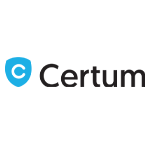
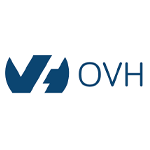

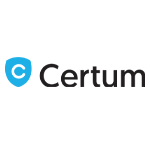


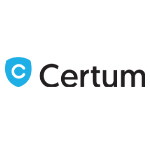
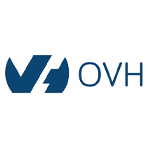
Leave a Reply